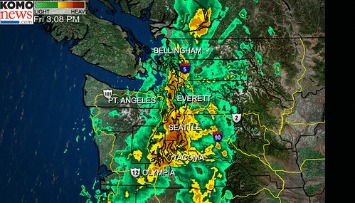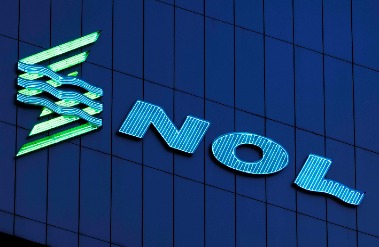
After a requisition order completes a business’s approval process, the e-Procurement system notifies the procurement department, which finalizes a purchase order to issue to the intended supplier. Automated purchase order software delivers the completed purchase order digitally and in near real-time. In addition an automated procurement system like the purchasing process by eliminating the need to manage physical documents and enabling purchase order applicants to follow their request progress digitally.
A purchase requisition can be automatically converted into a purchase order through electronic purchasing systems such as ERP software. Some software can integrate with existing inventory tracking solutions used by companies and thus ensure accuracy and time/cost savings. The supplier/vendor may also have an internal approval process for the purchase order raised by the business. Usually, since the PO is drafted after negotiations between the client and vendor, the POs are quickly honored by the latter.
Want to read more on the difference between Purchase Orders and Requisitions?
Purchase requisitions are internal documents that teams use to request approval for purchases. Purchase orders are external documents that organizations send to vendors to make purchases. While the advantages of purchase requisitions are clear, the manual processes involved in tracking and documenting them can be a hurdle for many businesses. Manual tracking is often prone to errors and mismanagement, and retrieving information from this system can be a logistical nightmare, creating inefficiencies in the procurement process. As business dynamics grow more complex, it’s essential to grasp the core mechanisms propelling the gears of commerce. Among these mechanisms, purchase requisitions and purchase orders stand as vital cogs.
The Hackett Value Matrix Quantifies the Value Realized From Purchase-to-Pay (P2P) Software Solutions Providers – Yahoo Finance
The Hackett Value Matrix Quantifies the Value Realized From Purchase-to-Pay (P2P) Software Solutions Providers.
Posted: Wed, 23 Aug 2023 14:00:00 GMT [source]
Because the equipment is high-end, the head of purchases would check in with the finance department first to make sure this is a feasible demand. Additionally, the accounting department uses this document to plan for future spending. It’s much easier to avoid costly mistakes if you check the budget prior to approving a purchase.
steps in the purchase requisition workflow
This situation is one of the reasons why purchase orders are important. The creation of a purchase order involves generating a unique purchase order number (often the same as the purchase requisition number) and forwarding it to the seller. With the generation of the purchase order, the sales transaction has begun. Once the seller accepts the order, the purchase order becomes a legally binding contract between the seller and the buyer. It means the purchasing department has officially authorized a particular seller to supply them with the needed materials at a particular cost.
- For example, if a finance department wants to purchase financial software to make their work easier and to improve security, they’ll need to use a purchase requisition form.
- Still, many companies have a self-approval process where employees don’t need approval up to a certain purchase amount.
- When you’re buying and selling a large volume of products, it’s hard to stay organized without the proper systems in place.
- When the requisition receives approval from all the concerned departments, the purchasing department receives it.
- In the absence of these two, the purchase can neither be initiated nor confirmed.
Companies often don’t have contacts for services, which could lead to liability issues. A purchase order used by your procurement department provides important information to both the buyer and supplier or vendor. A purchase order form outlines the purchase details, what are payroll taxes and who pays them including the quantity, description, price, and delivery date of the requested goods or services. The terms purchase requisition and purchase order are sometimes used interchangeably, but they are two different components in a company’s purchasing system.
Business is Our Business
They can confirm the price of the purchase matches the value on the invoice. Like requisitions, each PO has a unique number that’s used to identify it throughout the procure-to-pay process. Challenges will crop up everyday from an unsatisfied customer to an unexpected expense. Instead of chasing paperwork, you want employees to focus on customers and strategic matters. Here’s how this relates to another type of process – Netflix is changing the way people consume media content. Now, more and more networks are offering similar streaming services to remain relevant.
A company having one department (the purchasing department) to handle all the purchase requirements makes the process more efficient. With all your records in one place, management and finance teams can audit requests and purchases to increase quality, cut costs, and optimize the overall purchase requisition system. This process is critical to modern and efficient businesses because it enables buying when the time is right and stops unnecessary purchase requests before they take up too much valuable management time.
Difference Between a Purchase Requisition & Purchase Order
Remember that purchase requisitions are internal documents used to request goods or services from departments within the company. On the other hand, purchase orders are external documents sent to suppliers to confirm an order has been placed. A purchase requisition is an internal document sent from one department to another requesting the company buy items from an outside vendor. Typically, a purchase order is an external document going to an outside party as part of a sales transaction. They are formal requests generated internally by company employees intending to acquire goods or services. Before any purchase can be made, this document must be sanctioned by an authorized figure within the company, placing it as the primary step in the procurement process.

A purchase order is a document created after the approval of the purchase requisition. When creating a purchase requisition or a purchase order, the employees need to follow various steps. The article explores the steps to write a purchase requisition or order and its necessity.
Purchase Requisition vs Purchase Order: Know What the Difference Is
Electronic buying systems, such as enterprise resource planning (ERP) software, may instantly transform a purchase request into a purchase order. Integrating certain software with a company’s current inventory monitoring system is one way to guarantee precision and time/cost savings. Putting in place purchase orders helps protect a business against unanticipated price hikes.

Consequently, both the firm doing the purchasing and the company doing the selling is legally bound by the terms of the agreement. The receiving department, cost accounting department, and the department that requested the materials, all receive copies of the purchase order. Add relevant information regarding the objectives this purchase pertains to and needs analysis. Once all the required data is collected and submitted, the purchase requisition will be forwarded for screening.
Purchase Orders vs. Purchase Requisitions
When the requisition is approved, a purchase order is created to purchase goods or services. In the past, this process could take days or weeks when performed manually. Cloud automation streamlines and shortens approvals, helping organizations remain relevant and profitable in a fast-paced, post-pandemic marketplace. The purchase requisitions may be submitted whenever there is a demand for supplies from purchasing department. The specifics of the needed goods or services are often recorded on a request form. The individual requesting to acquire products or services is called the “requisitioner.”.
